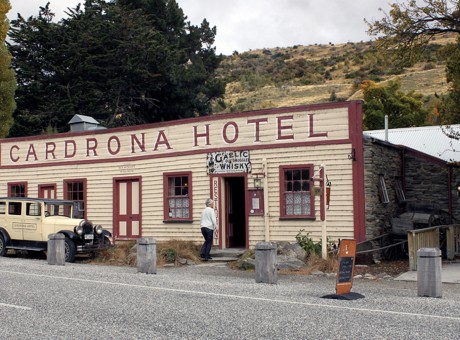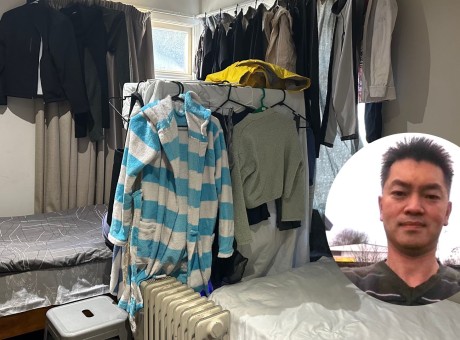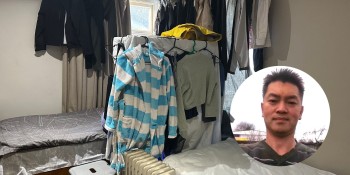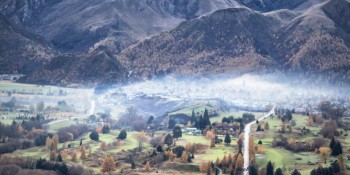Human poo in water likely cause of Queenstown's crypto outbreak
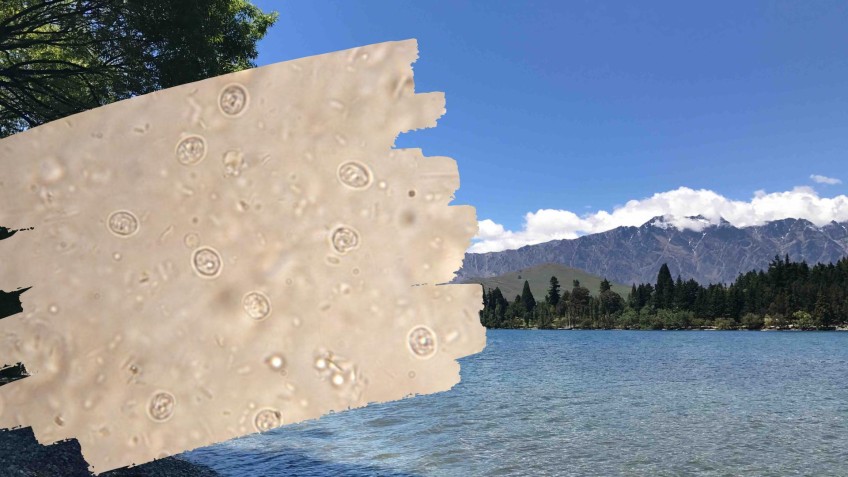
Human poo in the Queenstown water supply is the likely culprit for a local outbreak of cryptosporidium infection.
While scientists declare they may never know exactly where the contamination came from, their hypothesis is even just one poo, or the dumping of sewage from a boat, near the intake in Lake Whakatipu for the local water supply may have been enough to do it.
The announcement is "disappointing" but "not totally unexpected", according to Queenstown Lakes District Council head of infrastructure Tony Avery.
A boil water notice that has been in place for more than two weeks for thousands of households and businesses connected to the council's Two Mile water supply will now remain until the council is able to put a required protozoa barrier in place at the water treatment plant.
In a statement this afternoon, national health authority Te Whatu Ora says detailed investigations into the source of the outbreak "have concluded the most likely source is human faecal contamination of the water supply".
Medical officer of health Dr Michael Butchard says health experts, supported by ESR, have carefully examined all the information gathered by authorities since the outbreak began.
This included analysis of the outbreak’s epidemic curve, detailed case interviews with affected people, genotyping of samples, geo-spatial analysis mapping of cases, and ongoing water testing.
“Based on all the gathered information to date, our most likely hypothesis is that the outbreak started through human faecal contamination of the source water in Lake Wakatipu, which has then been collected into the Two-Mile water treatment plant’s intake pipes, then gotten into the water reservoir. From there, it has then been distributed around the Two-Mile water distribution network to homes and businesses, most likely over a number of days.
“While the results are unable to tell us exactly where the contamination came from, genotyping shows that the outbreak cases are all linked since they are all of the same hominis genotype, which is also evidence of a human rather than an animal source.
“There could also be a number of possible contamination sources, as only a very small amount of faecal contamination – for example from just one person – is enough to cause an outbreak of crypto. Possible sources could have included sewage dispersal from watercraft near the Two-Mile Lake Wakatipu drinking water intake, contamination from swimmers or other lake users, wastewater overflows or other undetected faults in the wastewater system. But we are unlikely to ever know.”
Dr Butchard says while water testing had not shown any positive results for cryptosporidium, testing itself is complex and not always conclusive, meaning negative cryptosporidium results from water testing cannot rule out the existence of the harmful parasite.
Adding strength to the hypothesis, investigations have not flagged any food or beverage supply, or particular event or location as a source of the outbreak.
This is further supported by the fact that the boil water notice put in place on September 18 has effectively halted what was a continuous source of contamination.
“We know the boil water notice in particular, along with other public health measures, has been very effective in halting the spread of crypto, and we thank everyone across the community who has played their part in following the advice to help limit the spread.
Taumata Arowai head of regulatory Steve Taylor, in Queenstown this week working with Queenstown Lakes District Council staff, says the compliance order issued to the council stand until the Two Mile water treatment plant is brought up to standard.

Taumata Arowai regulatory head Steve Taylor says a compliance order remains, so QLDC's boil water notice isn't going anywhere until a protozoa barrier is in place to keep drinking water safe.
“The compliance order we’ve served requires the council to advise consumers to boil water until a protozoa barrier is in place at the Two-Mile water treatment plant, and this remains in effect.
“Protozoa and other waterborne microorganisms can present a serious risk to public health, that’s why a multi-barrier water treatment system is required. The Queenstown supply at the Two-Mile water treatment plant is currently operated without a protozoa barrier.
“We are working with QLDC to ensure a cost-effective and pragmatic source water testing plan continues.”
The total cost to ratepayers remains unknown, but is likely to be tens of millions of dollars.
In recent days, the QLDC lifted its boil water notice for Frankton, Hanley’s Farm, Quail Rise and Tucker Beach Road, which are now being serviced solely by its Kelvin Heights water treatment plant, which has a protozoa barrier.
However the council's Mr Avery acknowledges the inconvenience the boil water notice continues to have for those living, working and visiting areas still affected by the health advice.
This includes Queenstown town centre, Gorge Road out to and including Industrial Place, Fernhill, Sunshine Bay, and Queenstown Hill above Frankton Road out to and including Goldridge Way and Goldrush Way.
He says, "We have always accepted that the water supply could be the source – ongoing negative test results do not exclude it – and so having it identified as the most likely, whilst disappointing, is not totally unexpected".
“Given that we have also seen cases of secondary, person-to-person infection, it’s also extremely important for everyone to take extra measures to avoid unknowingly passing the bug on. As well as boiling water, the best way to prevent this is to wash your hands really well regularly with soap and dry them thoroughly. You should also not use any swimming or hot pool if you have symptoms or for two weeks after they’ve stopped.”
Te Whatu Ora's official tally of cryptosporidium cases sits at 62, as of 10am, with another 18 probable cases. Twenty-four cases are under investigation.
Anyone with symptoms - which include watery diarrhea, stomach cramps and nausea - should contact their GP or call Healthline, the health authority says.






